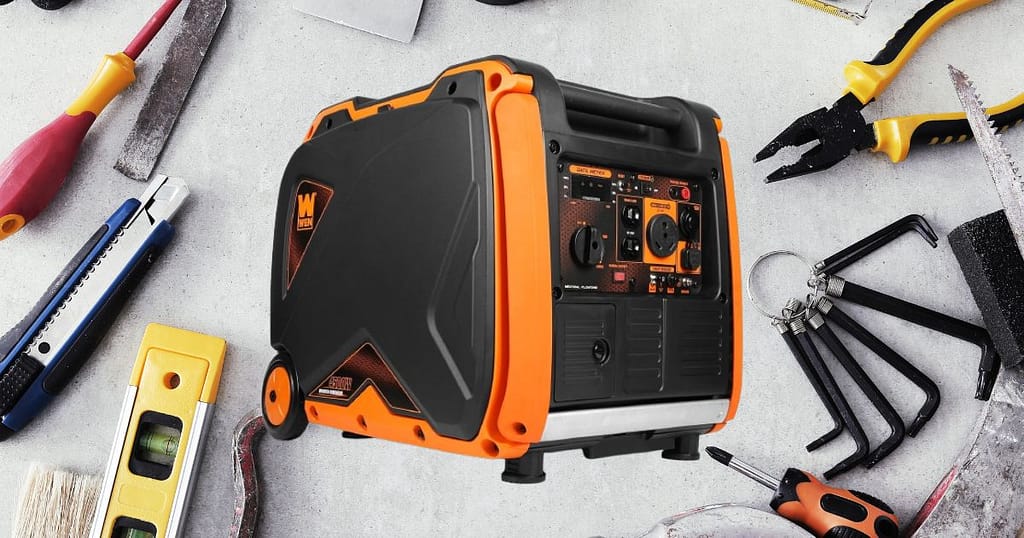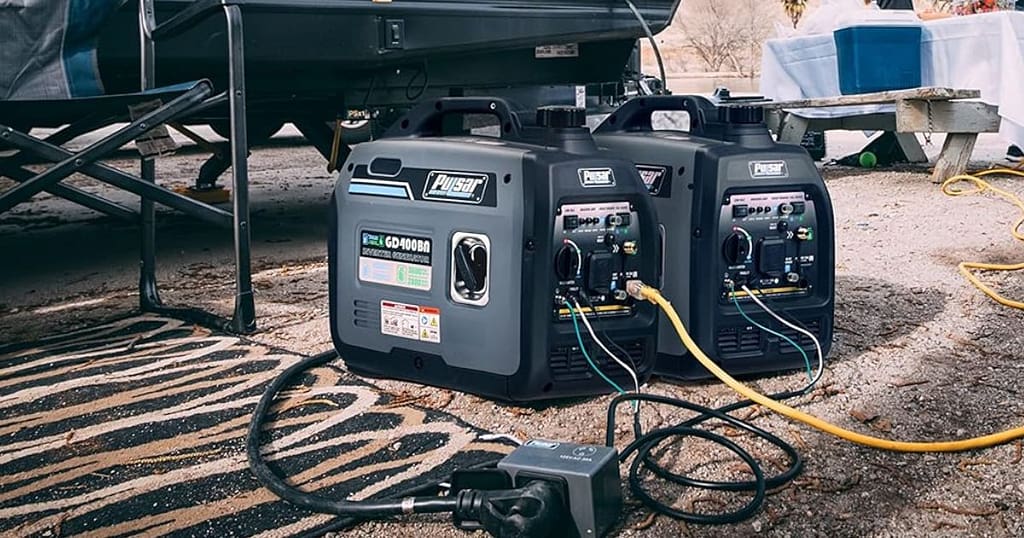
In a world where electricity is the lifeblood of our daily activities, power outages can disrupt our routines and leave us feeling powerless. This is where generators step in as saviors, providing a temporary solution to keep the lights on and essential appliances running. One popular and versatile option is the 3500-watt model. In this guide, we’ll explore the What can a 3500 watt generator run and understand what it can efficiently power.
Understanding the Basics
Before diving into the specifics, it’s crucial to grasp the concept of wattage and how it correlates with the appliances you intend to power. In simple terms, a watt is a unit of power, and the wattage of a generator indicates its capacity to produce electricity. A 3500-watt generator can generate a maximum of 3500 watts of electricity at any given moment.
What Can a 3500 Watt Generator Run?
1. Household Lights:
let’s start with the basics – lighting your home during an outage. A good mid-sized 3,500 watt generator should have no problem powering all your lights.
Nowadays most of us have switched to LED bulbs which sip power like nobody’s business. You can run a bunch of them throughout your house without breaking a sweat for your generator. Even a mix of LEDs and some remaining CFLs it’ll handle with ease.
Personally, I like having a few lamps with integrated outlets placed strategically so I don’t have to trip over stuff in the dark, you know? Put one in the kitchen, living room, and maybe the hallway. String lights are also great for providing a nice ambient glow.
Just be mindful that older incandescent bulbs are power hungry. I’d save those for emergency use only since they’ll tax your generator more. But for basic illumination while you hunker down, a mid-range portable generator has lighting your home covered with room to spare.
2. Refrigerator:
Can you imagine being without a fridge during a power outage? Obviously, No! The thought of all that wasted food is just depressing. Thankfully, a 3,500 watt generator has no problem keeping your fridge up and running so you can preserve those precious perishables!
Most standard fridge/freezers pull between 100-200 watts continuously, with maybe a surge of 300 watts on startup. No sweat for our trusty portable powerhouse. Now you may have to adjust your thermostat a bit higher to reduce the load, but it’ll maintain those temps just fine.
Personally, I like to do an inventory of what’s in there and do some strategic meal planning to limit opening the door as much as possible. Gotta keep that cold air in! Rotating items so the oldest stuff gets used first is also a good strategy.
3. Microwave Oven:
Most microwaves draw around 1000-1500 watts when running. With only occasional use, a mid-sized generator like ours has plenty left over to nuke up some leftovers or a frozen dinner. Just be mindful not to go crazy reheating the whole fridge contents at once, ya know?
Personally, I like to prep some one-pot freezer meals ahead of time for easy nuking. Things like soups, stews and casseroles reheat perfectly fine in the microwave. There’s also the tried and true method of grilling or using a camp stove if you need more than a single serving.
Your 3500 watt generator allows kitchen operations to continue smoothly so bellies stay full. You’ve got the convenience factor covered thanks to portable power pal!
4. Sump Pump:
Folks in flood-prone areas know all too well how important it is to keep water out of your basement! Having a sump pump is a must, and thankfully most fall well within a mid-range generator’s power capabilities.
A typical sump runs between 100-500 watts depending on the model. Even factoring in surge watts on startup, it’s a lightweight load that’ll run like a champ on our 3,500 watt portable generator. Just be sure to check the pump’s rating is under its continuous running load capacity.
Personally, living in an area with wet soil, I like to test my set up annually just to be sure. Nothing worse than finding out it doesn’t work when the rains really start pouring! Some extra ponding plates around the perimeter for backup don’t hurt either.
5. Power Tools:
Lots of common shop tools like circular saws, drills, sanders and such are under 1500 watts. As long as you’re not running multiple big draw machines simultaneously, a mid-range generator can definitely fuel your projects.
Personally, I like having an heavy duty extension cord on hand to set up a temporary workshop where needed. Whether it’s building a fence or fixing storm damage, you’ve got the juice to get the job done.
Just be mindful of starting surges on big motors, and don’t overload that circuits if you can help it. But overall, our generator buddy provides plenty of flexibility to keep productivity up even in less than ideal conditions.
6. Heating or Cooling Devices:
In colder climates, a small space heater only uses about 1000 watts and throws heat like nobody’s business. Just don’t leave it unattended and give it space so you stay toasty. On the flip side, if it’s a scorcher out, a couple of box fans circulating air do wonders and barely dent the generator’s capacity.
I like having a backup plan in place for both ends of the thermometer. Whether it’s an emergency blanket or two, or a swamp cooler for real saunas, having flexible comfort strategies is smart.
A 3500 watt generator gives you flexibility to tweak indoor temps no matter what Mother Nature throws your way. No need to rough it thanks to dependable backup juice on demand. Your home sweet home stays just that – a safe, comfortable refuge.
7. Televisions and Electronics:
When it comes to keeping you entertained during a blackout, the 3500 watt generator is a real lifesaver. I can run my 55-inch flat screen TV no problem, allowing me to catch up on all my shows. Streaming movies and shows on my laptop works great too thanks to the dual 120V outlets. If I want to listen to tunes, I can charge my phone and stream directly from it. Gaming systems like Xbox and PlayStation can also be powered through the generator. It even has enough juice left over to keep my internet router going so I can stay connected to social media and do work remotely if needed.
The 3500-watt generator is also perfect for keeping your fridge and freezer running during an outage to prevent food waste. Other appliances it can power include space heaters, dehumidifiers, fans, sump pumps, and more. If it runs on standard household current, this generator can likely handle it. At its reasonable price point, it pays for itself in no time by preventing spoiled food and allowing you to comfortably ride out multi-day outages. Plus the peace of mind of being prepared for emergencies is absolutely priceless in my book.
8. Chargers and Small Appliances:
In the kitchen, the 3500 watt generator will give you the ability to use countertop appliances that run on standard household current. Your coffee maker, toaster, blender – you name it, this generator can power it. Cooking isn’t really an option without natural gas, but boiling water on the stovetop or using a microwave is no sweat.
You can also use the generator to charge power tool batteries for projects around the house during an outage. Your drill, circular saw, and other cordless tools all run off standard lithium ion batteries now. So instead of buying disposable batteries, you’ll just plug the charger into the generator to top them off. It saves a ton of money versus constantly buying new batteries.
In the digital age we live in, staying connected to our devices and the internet is more important than ever. Whether it’s for work, school, or entertainment, we rely on constant access. A 3500 watt portable generator ensures you don’t lose that access even when the power grid fails you.
Limitations:
However, as with anything, there are some limitations to what a 3500-watt generator can and can’t power that are important to understand. While this size model is incredibly versatile for its size, it’s not a one-size-fits-all solution either. There are some higher-energy appliances that may overload its capacity if run all at once.
The first thing to call out is that large central air conditioners are a no-go for the 3500 watt generator. Running a typical window unit that’s 8,000-10,000 BTUs would max it out on its own. Central AC systems for an entire home require 15,000 watts or more, which greatly exceeds the generator’s output capacity. While it can run smaller window or portable AC units just fine, don’t expect it to power whole-home cooling.
Similarly, electric water heaters are also right out. These power-hungry appliances typically draw around 4,500 watts on their own when running. That would overload the generator before it even has a chance to heat water. Gas water heaters are a better choice if off-grid reliability is important for your home.
Another appliance that may push the limits is a full-size refrigerator or chest freezer with an interior light and automatic ice maker. Those extra components add significant extra load that could cause the generator to bog down. It would be best to disconnect the ice maker and any internal lighting to reduce the load if running one of these larger boxes. Smaller standalone freezers or mini-fridges are a safer bet.
It’s also important to pay attention to the total running wattage of everything plugged into the generator simultaneously. While the 3500 watt generators can handle 3500 watts of peak power, you want to stay under 2800 watts (its continuous running rating) for prolonged operation without overheating or damaging the engine. So you may need to cycle large appliances on and off to avoid overloading it if running multiple TVs, tools, etc at once during an extended outage.
Lastly, the generator is not meant for whole-home backup power. Things like central heating systems, large power tools, industrial equipment, and heavy-duty shop equipment will be too energy-intensive. It’s really designed more for temporary outage coverage and basic residential needs rather than permanent off-grid living or commercial/industrial applications.
Conclusion
I hope my guide will help you because I wrote everything necessary to tell you. Before, writing this guide, I checked a 3500 generator myself and did a lot of research.
Read our recommended guides:




